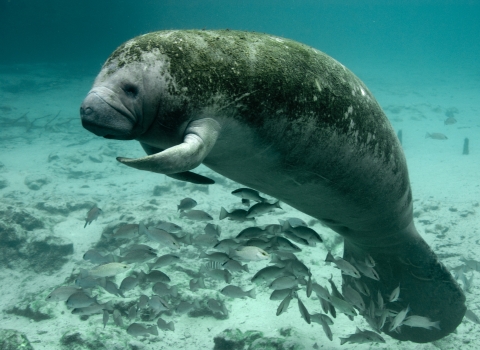DENVER — One of the most elusive rodents along the Front Range, the Preble’s Meadow Jumping Mouse (Preble’s mouse), has a final framework, developed by the U.S. Fish and Wildlife Service (Service) and a variety of federal, state, non-governmental organizations, and industry partners, to guide its continued recovery.
The Preble’s mouse is a little member of a big rodent family that is broadly distributed across the United States. This Rocky Mountain subspecies lives in one of the fastest-growing areas of the country and as a result, its habitat has been squeezed by loss and degradation from urban development, water and flood control projects, agriculture, and other human uses. Due to these habitat threats the Preble’s mouse was designated a threatened species under the Endangered Species Act in 1998. In its 1998 finding, the Service determined that the Preble’s mouse was likely to face extinction in the foreseeable future because of the loss of habitat from urban development and other disturbances. Now, a final recovery plan has been developed to restore the mouse’s populations and keep it from disappearing along the Front Range.
Recovery of endangered or threatened species is the primary goal of the Service’s endangered species program. To help guide recovery efforts, the Service works with others to prepare recovery plans for federally-listed species that describe actions necessary for the conservation of the species and establish objective, measurable recovery criteria. When met, these criteria would result in a determination that the species no longer needs the protection of the ESA.
The final recovery plan for the Preble’s mouse was developed in partnership with Colorado and Wyoming state wildlife agencies, The Nature Conservancy, Colorado Natural Heritage Program, ERO Resource Corporation, U.S. Forest Service, and Ecology and Environment, INC. The recovery plan describes actions necessary for Preble’s mouse recovery, establishes criteria for delisting the species, and estimates the time and cost for implementing the needed recovery actions.
Under the plan, the Preble’s mouse can be considered for delisting when two large, five medium, and several small wild populations are maintained over a ten-year period across the recovery area. These populations, along with maintenance of suitable habitat for each population for ten years or more, will lead to recovery of the species and possible delisting. State, county, or local regulations and other conservation efforts will help protect Preble’s mouse habitat and minimize threats to the species into the future.
The Preble’s mouse lives along vegetated streams from El Paso County, Colorado to southern Wyoming. With its large hind legs and long tail, this mouse can jump many times its own body length when alarmed, but spends most of its time scurrying about through grass and other vegetation within or near the 100-year flood plain.
The mission of the U.S. Fish and Wildlife Service is working with others to conserve, protect, and enhance fish, wildlife, plants, and their habitats for the continuing benefit of the American people. For more information on our work and the people who make it happen in the West, connect with us on Instagram and Facebook, follow us on Twitter, watch our YouTube channel at and download public domain photos from Flickr.



